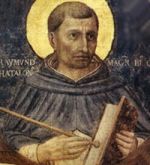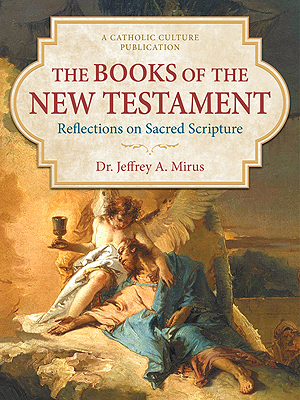Catholic Activity: St. Catherine of Alexandria
Biography of St. Catherine, whose feast day is celebrated on November 25.
DIRECTIONS
Catherine (November 25) — She was martyred for Christ in the persecutions of Maxentius (305-312) at Alexandria in Egypt. Legends have embroidered the meager details known of this maiden with unusual deeds and happenings. She is supposed to have disputed, at the age of eighteen, with fifty great philosophers in the presence of the emperor, and brilliantly confuted them all so that they had to refrain from any further questions. Upon this the enraged tyrant had her tied to a spiked wheel, but it broke as soon as the Saint's body touched it. She was then beheaded. Angels brought her body to Mount Sinai and there buried it. In the sixth century Emperor Justinian I built the famous Saint Catherine's monastery at the foot of Mount Sinai.
Her Greek name, Katharine, means "the pure one." Because of this she was widely venerated as a patron of virginity and purity. She is also patron of philosophers and universities. Since she was tied to a wheel, the wagon makers and millers chose her as a special patron of their trades. Her feast day used to be a popular holiday in medieval times, especially for students, who were free from classes on this day. In France her feast was celebrated for centuries as a religious holyday. In Paris it was custom for the midinettes (shopgirls) with youthful gaiety to stroll in paper caps, arms linked, along the Rue de la Paix on the evening of Saint Catherine's Day.
Ancient legends relate how from the bones of the Saint a clear, aromatic, and healing oil came flowing. This legend impelled even the Mohammedans to make pilgrimages to Mount Sinai in search of the miraculous oil. In Europe, oil was blessed by the priest in honor of the Saint and used as a sacramental against diseases, especially arthritis, asthma, and all kinds of festering sores. Saint Catherine is also invoked for any head ailments (headache, migraine, brain tumors, etc.) because she had given her own head to be severed for Christ's sake.
Since the penitential season of Advent precluded external pomp and noisy celebration (organ playing in church, music and dancing afterward), Catherine's Day, the last popular holyday before Advent, became, in medieval times, a day for weddings. An ancient rhyme tells of this custom:
On Catherine's day Your wedding is gay; But Andrew's day Takes the feasting away.
LITURGICAL PRAYER: O God, Thou hast given the law to Moses on the peak of Mount Sinai, and in a miraculous way, through Thy holy angels, hast also placed there the body of Saint Catherine, Thy Virgin and Martyr: grant that through her merits and intercession we may come to the true mountain, which is Christ.
Activity Source: Holyday Book, The by Francis X. Weiser, S.J., Harcourt, Brace and Company, Inc., New York, 1956






